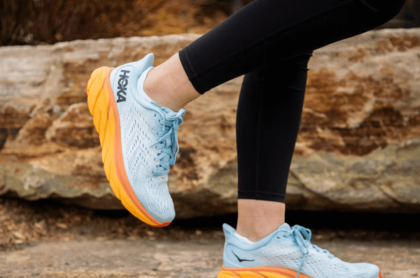Walking workouts have been around for a while now—thanks, at least in part, to the viral “12-3-30” treadmill workout and the ever-trendy “hot girl walk.”
But walking made news recently, not for weight loss, but for something equally important: blood sugar control.
It so happens that walking is not only a great calorie-torching mood elevator—it might also be one of the easiest, most efficient means of controlling your blood sugar.
Not believe it or don’t, you don’t need to walk miles or wipe out in sweat to benefit. A new study finds that even short “walking snacks” interspersed throughout the day can have profound health implications.
What the Research Indicates
In a recent study in Medicine & Science in Sports & Exercise, researchers examined what occurs to blood sugar when occasional amounts of activity are sprinkled throughout the day.
The experiment was simple: 11 adults spent eight hours (ahem: typical workday) sitting in ergonomic chairs, getting up only for bathroom breaks and short timed walks.
Researchers experimented with all sorts of “walking snack” routines—walking one minute for every 30 minutes, five minutes for every 30 minutes, or even a mere one to five minutes an hour. What did they find? Five minutes for every 30 minutes caused the most reduction in blood sugar spikes—a whopping 58% less than when no walking was taken at all.
How Does Walking Lower Your Blood Sugar?
Walking activates your muscles, which then pull glucose (aka sugar) from your bloodstream to use as fuel, explains Dr. Clare A. Kelly, an endocrinologist and assistant professor of medicine at Case Western Reserve University. This natural process helps lower your blood sugar after eating.
Walking also increases your insulin sensitivity, or how your body reacts to the insulin it produces—which is the basis of avoiding blood sugar problems and insulin resistance in the years to come.
Why Balance Matters for Blood Sugar
Having balanced blood sugar isn’t just good for people with diabetes. Level glucose levels are crucial, according to experts, for:
- All-day endurance energy
- Fewer cravings
- Better mood and clearer thinking
- Reduced risk of chronic diseases like type 2 diabetes and heart disease
On the other hand, poor blood sugar control can lead to weight gain, insulin resistance, and further health complications in the long run.
What’s the Best Walking Routine?
As per the study, the gold standard for blood sugar management was walking for five minutes every 30 minutes of sitting. But if that is not possible, even one minute of walking every half hour still had measurable advantages.
Surprisingly, walking less frequently—i.e., once an hour—wasn’t nearly as helpful, so the take-home here is to stand up frequently, even if it’s just to walk around your space.
Is Walking Better than Running?
While running might torch more glucose and be better for your heart health, walking is a softer, sweeter option—especially if you’re a beginner or need some stress relief. And let’s face it: It’s a heck of a lot easier to squeeze in a five-minute walk than a whole-fashioned jog when you’re held up in the middle of your workday.
Walking: The Unsung Superpower
And if you needed yet one more reason to walk more often, here is a concise list of its astounding advantages:
- Increases mood and fights anxiety
- Assists with weight management
- Increases heart and muscle strength
- Reduces risk of disease and diabetes
- Enhances sleep quality
- Strengthens immune system
- Enhances lifespan
- Suppresses appetites and balances hormones
So whether it’s a post-lunch stroll around your block or a quick lap between Zoom meetings, those little walks throughout the day can amount to big health gains.
Bottom line: Your body—and your blood sugar—will thank you for moving more often. So go ahead, take the walk. It may be the healthiest five minutes of your day.




